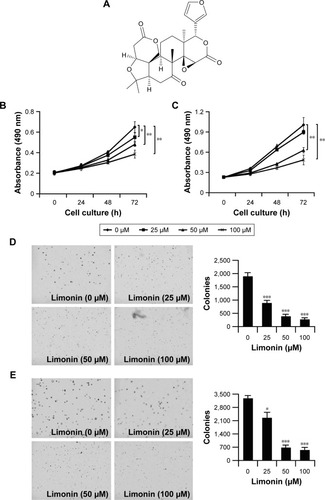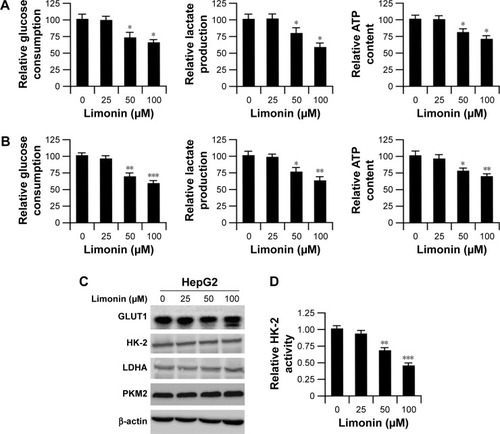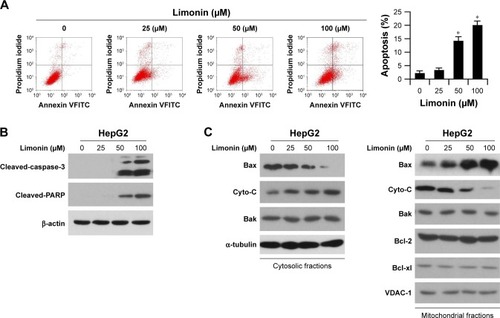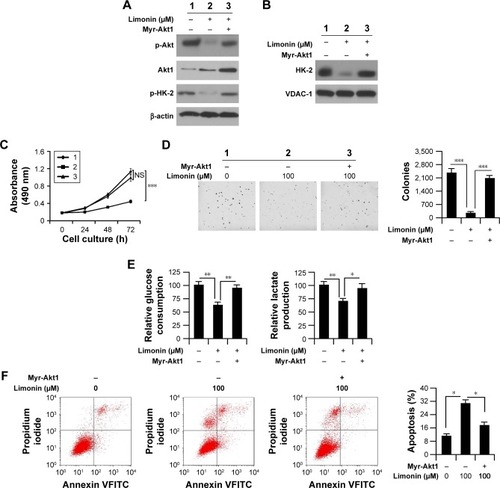Figures & data
Figure 1 Limonin inhibited HCC cell proliferation and colony formation.
Abbreviation: HCC, hepatocellular carcinoma.

Figure 2 Limonin suppressed tumor glycolysis by decreasing HK-2 activity.
Abbreviation: HK-2, hexokinase-2.

Figure 3 Limonin decreased HK-2 expression in mitochondria.
Abbreviations: HK-2, hexokinase-2; VDAC-1, voltage-dependent anion channel 1; PAS, phospho-Akt substrate.

Figure 4 Limonin induced cell apoptosis in HepG2 cells.

Figure 5 Limonin suppressed Akt activity in HepG2 cells.
Abbreviation: HK-2, hexokinase-2.

Figure 6 Exogenous hyperactivation of Akt impaired limonin-induced proliferation inhibition, glycolysis suppression and cell apoptosis.
Abbreviations: HK-2, hexokinase-2; VDAC-1, voltage-dependent anion channel 1; NS, no significance.

